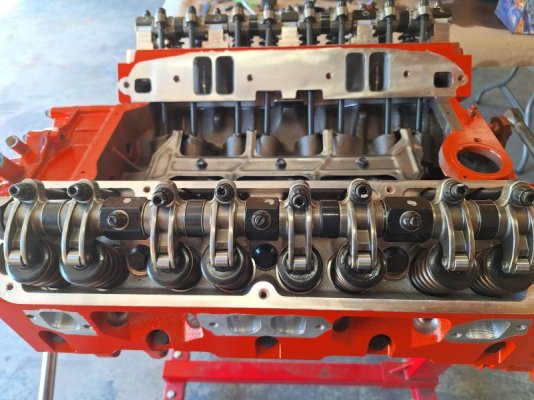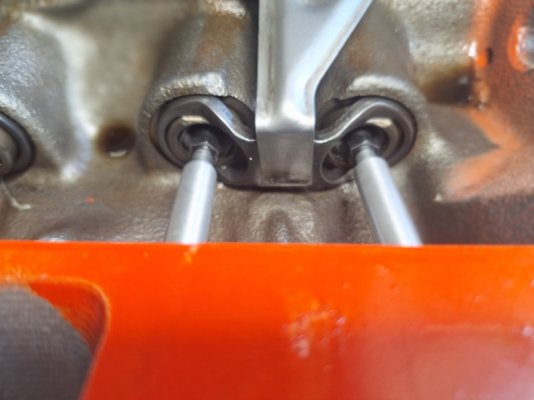Fair warning: I'm not an experienced engine builder. The 408 I recently finished was only my second build ever; the first was over 30 years ago. So my experience has been learned over the last 7 months. Having said that, I now have about 200 miles on the engine with no issues, no strange noises, 80 psi oil pressure at cold idle.
I see you installed adjustable rocker arms; are the adjusters cup or ball? It makes a difference when dialing in the final pushrod length.
Regardless of cup or ball, rotate the each rocker's adjustment screw until the adjuster bottoms out against the underside of the rocker. Then counter-rotate 360° to drop the adjuster down one or two threads from the rocker. This gives wiggle room for any final adjustments when installing the pushrods.
Pick a cylinder, doesn't matter which one but most people default to #1. The cam lobe has to be on the base circle. With the rocker arms cinched down (don't have to be fully torqued), increase the length of the checker pushrod until it won't rotate by rubbing one finger against it. Now its at zero preload. Continued lengthening of the checker rod will only increase lifter preload. Now add your preload to the pushrod length, typically 0.030" - 0.060". During my build I talked to Dave Hughes at Hughes Engines, and Mike Beachel at B3 Racing, and each said that choosing a preload number isn't critical. A tighter preload may be a little noisier at cold idle.
If the pushrod is ball end, you're done. Cup end is a little tricky because you have to subtract the depth of the cup from your total length. I used PRW rockers with cup adjusters (ball end pushrods) so I was done. Using calipers you can try to measure the diameter of the ball.
I measured both intake and exhaust for both #1 and #2 cylinders to get a comparison. Remember to rotate the engine for each measurement so that you're always on the base circle.
When you're done, call up Smith Bros. pushrods; they were very helpful when I ordered.
I used a paint daub to help count the revolutions. I also painted one surface of the hold down brackets because they're offset and I wanted to make sure they were reinstalled in the correct orientation.
View attachment 1886257



















